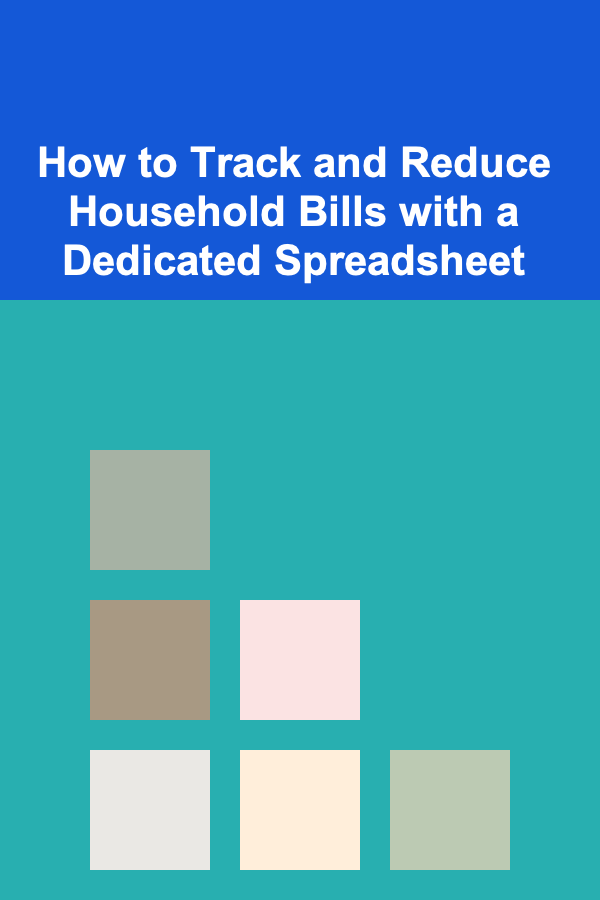
10 Tips for Choosing the Right App Development Methodology
ebook include PDF & Audio bundle (Micro Guide)
$12.99$11.99
Limited Time Offer! Order within the next:

When developing an app, one of the most crucial decisions you'll make is selecting the right development methodology. The methodology you choose will influence the app's design, development process, timeline, and overall success. Whether you're creating a mobile app, a web application, or a complex enterprise solution, the methodology you pick will significantly impact both the development and the end product. With so many methodologies available---Agile, Waterfall, DevOps, Scrum, Lean, and more---it can be challenging to determine which is best for your project.
This article will provide 10 tips to guide you through choosing the right app development methodology, considering factors like your project's scope, timeline, resources, and team structure.
Understand the Different Methodologies
The first step in choosing the right development methodology is understanding what options are available. Each methodology has its own set of principles and workflows. Here's a quick overview:
1.1 Waterfall Development
Waterfall is a traditional, linear methodology where each phase of development (planning, design, coding, testing, and deployment) happens sequentially. Once a phase is completed, the project moves to the next step. Waterfall is best for projects with clear, fixed requirements that are unlikely to change over time.
1.2 Agile Development
Agile is an iterative methodology that breaks down the development process into smaller, manageable increments called "sprints." Agile emphasizes flexibility, collaboration, and customer feedback, making it ideal for projects that require frequent updates or are prone to changes in requirements.
1.3 Scrum
Scrum is a subset of Agile that divides the development process into 2-4 week cycles, known as sprints. It focuses on delivering a working version of the product at the end of each sprint. Scrum requires a strong team dynamic and is suited for complex, fast-changing projects.
1.4 Lean Development
Lean focuses on delivering value to customers by minimizing waste. This methodology aims to reduce unnecessary processes and features, ensuring that only what adds value is developed. Lean is often used in startups or projects that aim to build Minimum Viable Products (MVPs).
1.5 DevOps
DevOps is a methodology that integrates development and operations teams to streamline the process of building, testing, and deploying apps. DevOps emphasizes continuous integration, continuous delivery, and close collaboration between teams. It's ideal for projects requiring frequent updates and releases.
1.6 Feature-Driven Development (FDD)
Feature-Driven Development is a model that emphasizes creating features based on the client's needs. Each feature is developed in iterations and can be tracked easily. FDD is ideal for larger teams and projects where features are well defined.
Assess the Project's Complexity and Requirements
The complexity of your app project will significantly influence the methodology you choose. If your app has a straightforward and well-defined set of features, you may be able to use a more rigid methodology like Waterfall. On the other hand, if the project involves many stakeholders, rapidly evolving requirements, or new technologies, an Agile or Scrum methodology may be more appropriate.
For example:
- Simple Apps: Waterfall or Lean methodologies may be more suitable for smaller apps with clear goals.
- Complex Apps: Agile or Scrum might be necessary for larger, more complex projects that evolve over time.
Tip: Before committing to a methodology, evaluate your project's overall scope, timeline, and expected changes. If you expect frequent shifts in requirements, Agile is usually the way to go.
Consider the Team's Size and Structure
The size and structure of your development team play a key role in determining the best methodology. Some methodologies are more suited for larger teams, while others work better for smaller, more agile teams.
3.1 Small Teams
For small teams, Agile, Lean, or even DevOps can be very effective. These methodologies emphasize collaboration and adaptability, which are easier to manage with a smaller group.
3.2 Large Teams
If your project involves a larger team or multiple teams working on different aspects of the app (e.g., front-end, back-end, testing), then Scrum or Feature-Driven Development (FDD) can help divide the work into manageable parts. These methodologies also provide clear roles and responsibilities, which helps large teams stay organized.
Evaluate the Flexibility of Requirements
Some app projects have stable, fixed requirements from the beginning, while others may evolve as they progress. If your app has well-defined, unchanging requirements, a traditional methodology like Waterfall might be the right choice. However, if the project is likely to change, Agile or Scrum may be a better fit, as they allow you to adapt as you go.
For example:
- Fixed Requirements: Waterfall works well for projects with clear, unchanging requirements.
- Evolving Requirements: Agile and Scrum are perfect for projects where flexibility is key.
Tip: If you're unsure about the stability of your project's requirements, starting with Agile will give you more flexibility to make changes as you move forward.
Budget and Time Constraints
The budget and timeline available for your app development project will also influence your methodology choice. Some methodologies are more resource-intensive and require greater investment, while others are faster and more cost-effective.
5.1 Tight Budget and Timeline
If you have limited resources or need to release the app quickly, Lean and Agile are ideal methodologies. These approaches focus on creating a functional MVP quickly, allowing you to test with real users and gather feedback before adding more features.
5.2 Longer Development Timeline
For projects with a longer development timeline and a more generous budget, Waterfall can be a suitable methodology. It provides a clear structure, with each phase of development carefully planned and executed in sequence.
Determine the Level of Customer Interaction
If your app requires heavy customer involvement and feedback during the development process, Agile or Scrum is the best approach. Both methodologies involve regular sprints and frequent iterations, which allow for quick changes based on user feedback. On the other hand, Waterfall is more linear and doesn't typically allow for frequent customer feedback during the development process.
Tip: If customer feedback is crucial at multiple stages of development, Agile or Scrum will help ensure that the app aligns with user expectations.
Consider Long-Term Maintenance and Scaling
When selecting a methodology, think about the long-term maintenance and scalability of your app. Some methodologies are better suited for apps that will need regular updates or scaling over time.
7.1 Continuous Updates
If your app requires frequent updates or continuous deployment, DevOps is a great methodology. It integrates development and operations teams to streamline the release process, ensuring that the app can be updated frequently without disrupting its functionality.
7.2 Stable, One-Time Delivery
If your app is not intended for ongoing updates, and you prefer a one-time launch, Waterfall may be a more appropriate choice.
Factor in Risk Management
Every app development project involves risks, whether related to technology, resources, or user adoption. Different methodologies handle risks in varying ways.
- Agile: Agile methodology embraces uncertainty and allows for incremental risk management through regular feedback and iteration.
- Waterfall: Waterfall is less flexible when it comes to managing risks since the process is linear and doesn't accommodate changes easily once a phase is completed.
- DevOps: With its focus on continuous integration and delivery, DevOps is excellent for minimizing risks associated with deployment and ensuring smooth transitions between development and production environments.
Tip: If risk is a major concern in your project, choose a methodology like Agile or DevOps that allows for flexibility and iterative problem-solving.
Examine the Project's Technology Stack
Certain methodologies align better with specific technologies. For instance, if you're building an app using microservices or need continuous delivery and integration, a DevOps approach would be a natural fit. Similarly, if you're working with a well-established, monolithic architecture, Waterfall might be a better fit.
Tip: Ensure your chosen methodology complements the technologies you're using. Some methodologies work better with specific tools or frameworks.
Test and Validate Before Committing
Before fully committing to a development methodology, consider running a small test or pilot project to see how well the methodology fits your team and project needs. This can provide valuable insight into how effectively the chosen methodology works in practice and whether adjustments are necessary.
Tip: Start small, validate your approach, and be open to switching methodologies if necessary. There's no one-size-fits-all solution, and flexibility is key.
Conclusion
Choosing the right app development methodology is a critical decision that will affect the success of your project. By understanding the different methodologies available, evaluating your project's complexity, budget, and team structure, and considering the long-term needs of your app, you can make an informed decision. Whether you choose Waterfall, Agile, Scrum, Lean, DevOps, or another approach, the key is to align the methodology with your project's unique needs and requirements.
Reading More From Our Other Websites
- [Home Pet Care 101] How to Prevent and Treat Fleas and Ticks
- [Personal Financial Planning 101] How to Balance Short-Term and Long-Term Financial Goals
- [Personal Investment 101] How to Start a Deep Learning Side Hustle for Passive Income
- [Trail Running Tip 101] The Mind‑Body Connection: Why Trail Running Becomes a Meditation in Motion
- [Home Holiday Decoration 101] How to Decorate a Small Space for the Holidays Without Overcrowding
- [Personal Investment 101] How to Analyze Market Trends and Make Informed Investment Choices
- [Home Security 101] How to Use Eufy Security for Smart Home Integration and Better Protection
- [Soap Making Tip 101] How to Choose the Right Oils, Lye, and Additives for Perfect Bars Every Time
- [Personal Care Tips 101] How to Apply Hand Cream for Soft and Smooth Hands
- [Home Budget Decorating 101] How to Decorate Your Home with Found Objects: Turning Trash into Treasure

How to Organize Your Bathroom with Minimalistic Storage Solutions
Read More
How to Organize Your Outdoor Sports Equipment
Read More
How to Track and Reduce Household Bills with a Dedicated Spreadsheet
Read More
Exploring the Truth Behind Secret Government Programs
Read More
How to Solve the 2x2 Rubik's Cube: A Beginner's Guide
Read More
10 Tips for Budget-Friendly Road Trips
Read MoreOther Products

How to Organize Your Bathroom with Minimalistic Storage Solutions
Read More
How to Organize Your Outdoor Sports Equipment
Read More
How to Track and Reduce Household Bills with a Dedicated Spreadsheet
Read More
Exploring the Truth Behind Secret Government Programs
Read More
How to Solve the 2x2 Rubik's Cube: A Beginner's Guide
Read More